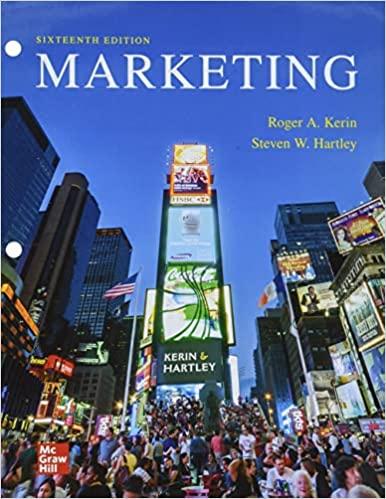Question
SA fashion brands lean into sustainable textile innovation Sealand, the premium outdoor brand produced in Cape Town, and intimates label Jockey South Africa, which is
SA fashion brands lean into sustainable textile innovation
Sealand, the premium outdoor brand produced in Cape Town, and intimates label Jockey South Africa, which is manufactured in South Africa, have incorporated sustainable textiles Econyl and Modal respectively into their product ranges. Fashion and apparel companies have been urged to use more recycled materials and environmentally-friendly textiles from natural regenerative sources to help combat the scourge of plastic waste. Experts recently called for the United Nations to set a global target of zero new plastic pollution by 2040, and at the COP27 conference delegates also agreed that the management of plastic waste should be a core element of combatting carbon emissions and tackling climate change. Because most plastics are derived from fossil sources, they contribute to global warming throughout their production, consumption and disposal lifetime, as well as being a massive contributing source of ocean and land pollution.
Regenerated nylon from waste
Sealand recently launched its first range of gear made from Econyl nylon, marking the first time that a company in Africa will be using this innovative material in bags and outdoor gear. Econyl is regenerated nylon that is made from collected nylon waste that would otherwise pollute the earth, including fishing nets, fabric and industrial carpet scraps, and industrial plastic. This nylon waste then goes through a regeneration and purification process that creates a new nylon product that is exactly the same as brand-new, fossil-based nylon. It can be recycled, recreated and remolded repeatedly.
Speaking about the new range, Sealand co-founder Jasper Eales explained: "Sealand was built around our love for the sea and the land that we live on. Our mission is to protect nature and the outdoors that we love, and to ensure that every decision that we make keeps the planet and its people front and centre. All of our bags and apparel are made from upcycled or recycled waste, or from responsibly and carefully sourced materials." "The launch of the product range made with Econyl is the biggest product and material progression that Sealand has made to date, and it takes our commitment to the planet one step further. It's said that up to a million tonnes of lost and discarded - or 'ghost' - fishing nets enter the ocean every year, causing untold damage to marine life and habitats. To be able to use a fabric that can create value out of waste such as this, and which can play a role - however small - in removing it from our natural environment, is incredibly important to us," he continues. Econyl has been used globally in collections by leading global fashion names including Stella Mccartney, Gucci and Louis Vuitton. "This is a premium material, which is also incredibly durable and functional. It has a water retardant built into it, so it is also water-resistant. Our products are built for adventurous high-performance lifestyles, so these are a natural extension to our range," continues Eales. The new range made with Econyl includes four products - the Buddy S backpack, Rowlie backpack, Moon cross body bag and the Dune M duffle bag - in three colours.
QUESTION 1 (25 Marks) Design and illustrate an appropriate model for Sealands Supply Chain and discuss all activities and flows involved in Sealand's supply chain.
QUESTION 2 (25 Marks) As the supply chain manager for Sealand, identify and evaluate the different types of Retailer-Supplier Partnerships (RSP) within the text tile industry and provide a suitable recommendation for Sealand.
QUESTION 3 (25 Marks) Analyse the benefits and risks of Retailer-Supplier Partnerships (RSP) in relation to Sealand.
QUESTION 4 (25 Marks) Global optimisation is made more difficult by the need to design and operate supply chains in uncertain environments, thus increasing the organisation's exposure to risk. Analyse, using your own examples from the textile industry, the management of uncertainty and risk factors that contribute to the organisation's exposure to uncertainty in its operating environment
Step by Step Solution
There are 3 Steps involved in it
Step: 1

Get Instant Access to Expert-Tailored Solutions
See step-by-step solutions with expert insights and AI powered tools for academic success
Step: 2

Step: 3

Ace Your Homework with AI
Get the answers you need in no time with our AI-driven, step-by-step assistance
Get Started


